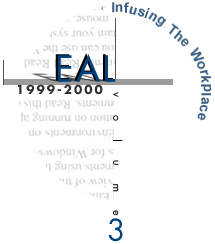

Downside
Funding sources often require programs to utilize quantitative assessment measures which may discourage the use of portfolios. Also, adult learners may resist using portfolios if they are uncomfortable with nontraditional assessment. For students who prefer defined parameters for success, portfolios may actually negatively impact motivation (Fingeret, 1993). Even if learners are willing to engage in portfolio construction, they may lack the critical reflection skills needed to assess their work.
Finally, tutors who prefer a traditional style of instruction in which they are in control may feel uncomfortable with the collaborative nature of portfolios, or they may not want to take the time to develop and implement them. These problems, however, may not be insurmountable. Numerous literacy programs are actively working to determine how portfolios may be considered a valid measure of program success. Some approaches that have been tried include combining the portfolios of an entire group of learners to reflect the success of the program or class as a whole and utilizing checklists to evaluate portfolios (Fingeret, 1994).